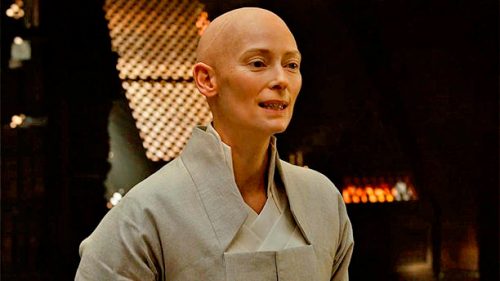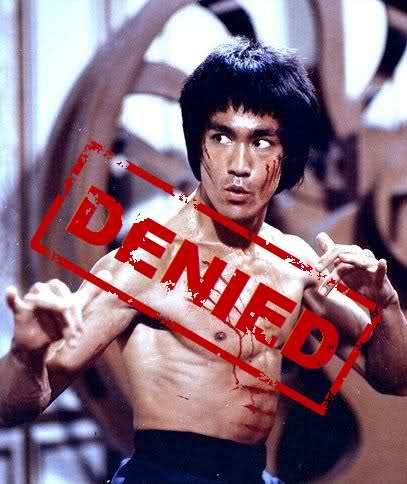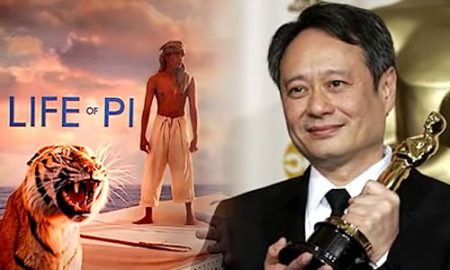
The visage of Tilda Swinton in Marvel’s recently released “Doctor Strange”, in which the English actress plays the Asian Ancient one, has yet again highlighted one of Hollywood’s most criticized habits: Whitewashing, namely casting white actors in non-white roles, particularly the lead ones. And it seems that Hollywood is not planning on fixing it. Next year, Scarlett Johansson will be seen playing the lead character, Major Motoko Kusanagi, in the American adaptation of the Japanese manga series “Ghost in the Shell.”
Hollywood doesn’t see whitewashing as a problem, insisting that it’s a financial necessity. It’s not about race, they say; the only color they see is green: Non-white actors don’t have a box office track record. This was the argument director Ridley Scott and producer/star Gerard Butler made to defend casting white actors to play Egyptians in their recent movies “Exodus (2014)” and “Gods of Egypt (2015) respectively.
Nonetheless, both “Exodus” and “Gods of Egypt” flopped at the box office. Casting other white stars in non-white roles in recent films, such as Cameron Crow’s “Aloha,” in which Emma Stone played a Chinese-Hawaiian character, or “Pan” and “The Lone Ranger”, in which Rooney Mara and Johnny Depp respectively inhabit Native Americans, also resulted in a box office disaster. So white doesn’t always turn into green.
Meanwhile, films featuring a racially-diverse cast, made of non-white leads such as “Star Wars: The Force Awakens,” “Furious 7,” “The Jungle Book” and “Suicide Squad” have broken box office records. Evidently, cinema-goers don’t seem to care about the actors’ skin color, as much as Hollywood does, demolishing the financial argument for whitewashing. So why does Hollywood continue to practice it? And is there a racist motive behind it?
White actors have been playing other ethnic characters since the early days of Hollywood, but instead of today’s race erasure, in which the colored character is replaced by a white one, the practice of Yellowface or Blackface, in which a white actor wore a color makeup to play an Asian or a Black character respectively, was employed. In 1915, blackfaced white actors portrayed the villainous black characters in D.W. Griffith “Birth of A Nation,” while Mary Pickford was the first white actress to wear a Yellowface in order to play the Japanese woman, Cio-Cio San, in “Madame Butterfly.” They were followed by many other white actors, who stood in for all non-white lead characters, including Chinese, Japanese, Arabs, Native Americans. Meanwhile, colored actors were cast in minor supporting roles, mostly villains.
Even internationally-known ethnic actors, such as Chinese-American actress, Anna May Wong, couldn’t get any roles that were not limited by stereotype and prejudice. In 1935, Wong passed on the role of the villainess, the stereotypical Oriental Dragon Lady in “The Good Earth,” when the Chinese lead character was given to a white actress, Luise Rainer, who won an Oscar for it. Eventually, Wong left Hollywood for Europe.

The most famous such was Bruce Lee, who got fed up with stereotypical supporting roles in Hollywood, and in 1971 he moved to Hong Kong, where he became an international superstar within a year. Before leaving Hollywood, Lee pitched a TV show about a martial-artist, a Shaolin monk, to Warner Bros. The studio took the idea, retooled it, renamed it to “Kung Fu” and gave the lead role to then-non-martial-artist David Carradine. Again, the studio’s decision didn’t make any business sense. After all, Lee possessed all the ingredients of a superstar: he was handsome, talented, charismatic, and evidently cinema goers adored him. He was as green as it got, but for Hollywood, he was simply yellow.
To understand Hollywood’s attitude towards colored actors, one needs to look at its portrayal of non-white cultures and their people in its movies. Since its early days, Hollywood has presented Asians, Arabs, Africans or Native Americans as morally and culturally inferior to the whites. Films like “The Birth of A Nation (1915)” presented black characters as lustful rapists, while the “Sheik (1935”) showed the Arabs as savage beasts, and “Fu Manchu (1940-1960)” offered an image of evil doers for Asians. So what is the real reason behind this practice?
The process of making a film in Hollywood begins with the writer, who writes the screenplay, followed by an executive who greenlights it, and then a director who translates it to the screen. Like any artistic expression, a film reflects the vision of its makers. It springs from the depth of their minds, where thoughts and ideas are formed by the processing of experiences and knowledge they have absorbed from their environments over the course of their lives. Commonly,, filmmakers learn about foreign cultures from the movies, which divide characters into us, who look and act like the filmmakers, and them, who are different and unfamiliar. Using previous movies as reference, new generations of filmmakers continue, often obliviously, to perpetuate the old false stereotypes and prejudices about people from other cultures. And since Hollywood is dominantly white, the good guys have been often white and the bad ones have been everybody else.
In recent years, there have attempts by enlightened white directors to eschew falling into stereotyping other ethnicities but with little success. They simply switched the non-white characters from villains, whom the white hero eventually eliminates, to the victims, whom are saved by the white hero. Hollywood films reflect reality as perceived by westerners, who, regardless of their social or political views, see themselves as the guardians of humanity and the enforcers of morality. So no wonder that ethnic heroes are whitewashed and minor villainous roles are given to non-white actors in their movies.
Hence, I doubt that casting more ethnic actors in a film, made by white filmmakers will ameliorate Hollywood’s attitude towards ethnic minorities. For a director, the actor is what clay is for a sculptor. He molds and sculpts him to fit his own vision, regardless of whether he or she was white or not, as it was demonstrated in a scene from Paul Haggis’ “Crash (2004),” in which the director kept pressing his black actor (played by Terrence Howard) to act like a stereotypical black guy rather than an authentic one. Ethnic actors often relay to me such experiences in casting auditions and on film sets, where they are instructed to look and behave contrary to their true nature.
Having confronted many of Hollywood’s filmmakers about their misrepresentation of other ethnicities in their movies, I’ve learned that they were simply misinformed or lacked the understanding of other cultures. George Clooney, for instance, ended up perpetuating the fallacy that an Arab is either a rich Sheik or a frustrated terrorist in “Syriana (2005),” instead of achieving his goal of improving the portrayal of Arabs in Hollywood movies. In an interview with me, he admitted that he saw the world from the perspective of a white American, and only an Arab director could present an authentic image of his own people.
Indeed, ethnic characters in movies made by non-white directors look very different: they are full, complicated humans. And since colored directors see the world as racially diverse rather than purely white, they are able to give us fully rounded colored characters in their movies, as James Wan and Justin Lin have done in “Furious 7”, “Star Trek Beyond,” respectively.

Unlike white directors, who resort to financial excuses for the dearth of colored actors in their movies, ethnic directors often tell me that a racially diverse cast is a natural choice for them. Case in point, Sony’s leaked emails have revealed that Aaron Sorkin had complained about the difficulty of adapting “Flash Boys,” Michael Lewis’s book about the Wall Street executive Bradley Katsuyama, because the lead was Asian. Sorkin ended up writing “Steve Jobs” instead. Yet, Ang Lee had no problem adapting “Life of Pi (2012),” with an unknown Indian kid in the lead. Ironically, Lee’s “Life of Pi” grossed a whopping $609 million at the box office and collected several Oscars including the Best Director for Lee, while Sorkin’s Steve Jobs bombed commercially and left the Academy Awards ceremony empty handed.
Furthermore, in spite of the recent dominance of the Asian markets, particularly China, which is expected to surpass the US in ticket sales in the next couple of years, Hollywood has persisted in its old ways. Instead of nurturing a new Chinese talent and offering stories with full rounded Chinese characters, it inserts Chinese stars in its movies as if they were props or product placement. An example of that would be Chinese superstar Fan Bingbing’s role in the Chinese version of “Iron Man 3” or in “X-Men: Days of Future Past,” in which she has one line. Chinese audiences were not fooled, giving their stars in Hollywood movies the term “flower vases.”
Eager to tap into the massive Chinese market, Hollywood came up with another ploy: make their white stars deliver Chinese lines in their movies. Among them were Tom Cruise in Mission Impossible, Bruce Willis in Looper, and Kate Mara in Morgan. Chinese moviegoers were amused but not impressed, turning to home-grown movies, which have seen their box office gross rise to 57% in the first half of this year. Meanwhile, Hollywood movies dropped to 46.9% of ticket sales in the same period, from last year’s 53.5%.
If Hollywood is truly green, as it has been claiming for over a century, then it’s time to prove it. Will it make movies with Chinese audience sensibilities? Will it employ Chinese storytellers and directors to make them? Will it cast Asian actors to play their lead characters?
In spite of demonstrating some progress on the diversity front, Hollywood is still decidedly white, otherwise, the roles of the Asian Ancient one in “Doctor Strange” and Major Motoko Kusanagi in the “Ghost in the Shell” could’ve easily been played by Asian actors instead of Swinton and Johansson respectively.